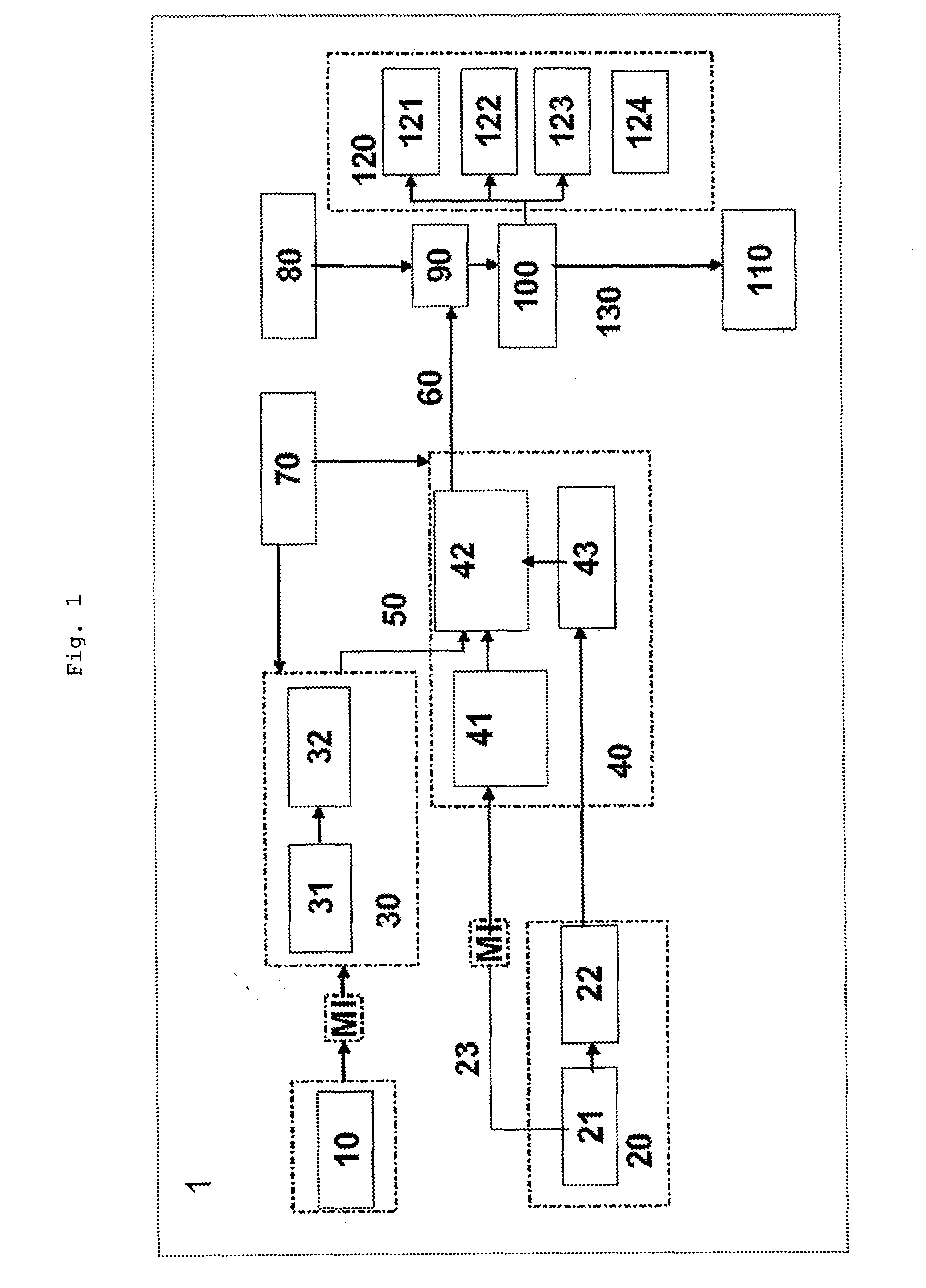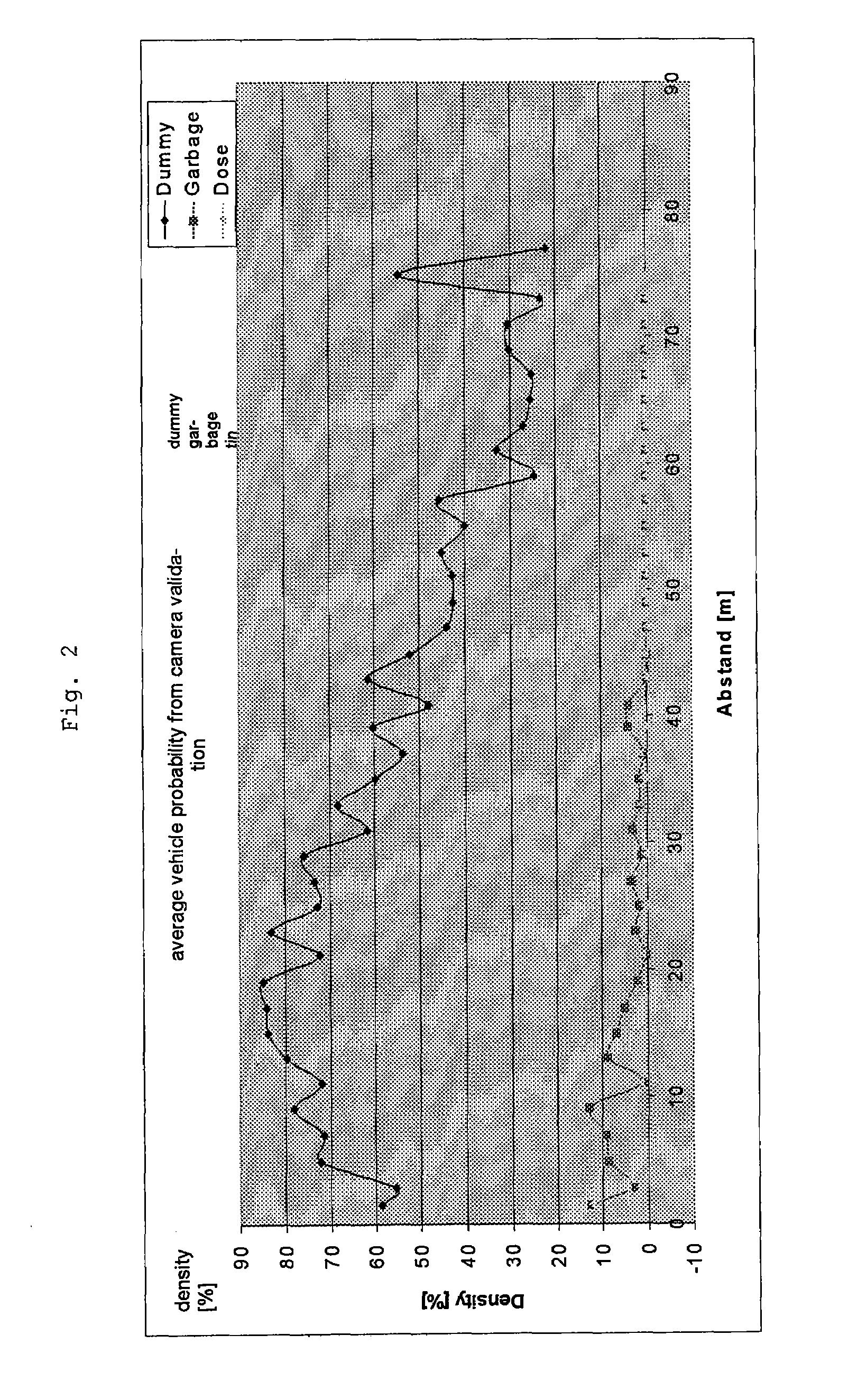System for Determining Objects
a technology of objects and systems, applied in the field of multimodal detection of objects, can solve the problems of system-related, application-specific restrictions, adverse effects on the detection of objects, etc., and achieve the effect of simple, robust, reliable braking strategies
- Summary
- Abstract
- Description
- Claims
- Application Information
AI Technical Summary
Benefits of technology
Problems solved by technology
Method used
Image
Examples
Embodiment Construction
[0031]As is illustrated in FIG. 1, the radar sensor 10 initially carries out a preselection of relevant targets or objects 60. The position of these objects is signalled directly, or as is shown in FIG. 1, signalled indirectly to the camera via an object-determination means and a situation analysis means 42. If the camera can classify an object as relevant in a specific region, this is accepted as a relevant target or object. The principle during detection is to search for various optical characteristics of a vehicle at the position determined in the field of vision by the radar 10, at which position a target has been detected by the radar 10. Depending on whether a large number of characteristics or only a small number of characteristics have been detected, the detection rate increases, and therefore the probability increases that the detected object is, for example, a vehicle.
[0032]By using a radar close-range sensor system (24 GHz radar) 10, it is possible not only to implement c...
PUM
 Login to View More
Login to View More Abstract
Description
Claims
Application Information
 Login to View More
Login to View More - R&D
- Intellectual Property
- Life Sciences
- Materials
- Tech Scout
- Unparalleled Data Quality
- Higher Quality Content
- 60% Fewer Hallucinations
Browse by: Latest US Patents, China's latest patents, Technical Efficacy Thesaurus, Application Domain, Technology Topic, Popular Technical Reports.
© 2025 PatSnap. All rights reserved.Legal|Privacy policy|Modern Slavery Act Transparency Statement|Sitemap|About US| Contact US: help@patsnap.com



